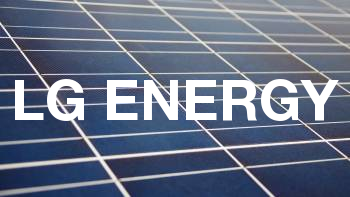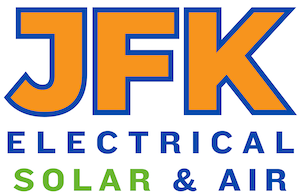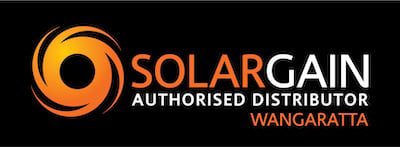

Finn's BYD Batteries Review & Verdict
Finn Peacock has been a Chartered Electrical Engineer since 1998, and is ex-CSIRO
BYD knows how to make a battery. If you have a Fronius hybrid inverter, choosing a BYD home battery is a no-brainer.
BYD Batteries: Pros & Cons
- Excellent quality as used by Fronius
- Compatible with many brands of inverter
- Range of options in high and low voltage
- High power
- Scaleable storage which can be increased incrementally
- Genuinely stackable with automatic plug and play connections
- Supportive company that has recently made announcements well in advance of discontinuing 10 year old models
- 50°C Operating temperature limit
About BYD
BYD stands for Build Your Dreams and one of BYD's many dreams is to be the no.1 company for solar battery storage.
This giant Chinese company entered Australia's home battery battleground in 2017 when they introduced the "B-Box". These days they no longer shorten its name and it's called the "BYD Battery Box". It's a stackable, modular battery that has one low voltage and two higher voltage versions.
I'll tell you about the battery box below, but first I'll provide some information on BYD.
BYD Company Info
BYD was founded in 1995 and listed on the Hong Kong Stock Exchange in 2002. They say their name stands for "Build Your Dreams" but sometimes I wonder if they just grabbed some letters that hadn't already been taken and decided what they stood for later.
The company started out as a battery manufacturer. Exploiting cheap Chinese labour allowed them to compete with producers in other countries. As China's labour costs rose, BYD invested heavily in automation.
In 2022 BYD was the world's third largest producer of lithium batteries with 12% market share. At the start of 2022 they had 135 gigawatt-hours (GWh) of battery production capacity and this was projected to rise to 445GWh by the start of 2024. In practice, actual battery production is typically around 60% of total capacity but, because they're always rapidly expanding, in 2024 BYD may produce over 300GWh of batteries. That's over 11 kilowatt-hours (kWh) for every person in Australia.
BYD began making automobiles in 2002 and is now the world's 10th largest car manufacturer. This means they took the opposite path to Tesla, which started out as an electric vehicle (EV) manufacturer and then moved into solar battery storage. In the first six months of 2023 they sold 1.25 million EVs and plug-in hybrids. By October 2023, Tesla and BYD were neck and neck in total sales of pure EVs, with Tesla less than 1% ahead. BYD looks certain to become the world's largest EV manufacturer.
While not the largest electric bus manufacturer in China, BYD has made something like 200,000 of them. Mostly in China, but others have been made under licence in a number of countries including Australia.
BYD's headquarters are located in a giant hexagon. My guess is they looked at the United States Pentagon and decided to go one better. It's located in Shenzhen - a city on the Chinese mainland opposite Hong Kong.
BYD EV sales have only recently started taking off in Australia, but it may not be long before our roads are chock full of them.
BYD Battery Box Appears Safe
The BYD Battery Box has cells with lithium-iron phosphate (LFP) chemistry. While this is the safest type of lithium battery, its actual level of safety will depend on its design, the quality of components, and the care taken with its manufacture. The good news is - so far - BYD Battery Boxes seem safe. Given BYD has around three decades of experience with lithium batteries, I'd expect them to get this right.
Hybrid Inverter Required
Battery Boxes require a compatible hybrid inverter or battery inverter. The list of compatible inverters includes Fronius, Goodwe, SMA, Solis, Sungrow, and GE. Victron and Australian-made Selectronic battery inverters can also be used.
Low & Higher Voltage Versions
There are three versions of the BYD Battery Box:
- The low voltage Battery Box LVS
- The higher voltage Battery Box HVS and Battery Box HVM
Low-voltage batteries have thick and heavy cables and need to be located very close to their inverter. Higher voltage batteries are more flexible with where they can be located. This is often important due to Australia's strict fire safety standards for battery installation.
Modular & Stackable
All Battery Boxes consist of modules that can be stacked on top of each other. The number can vary and this gives flexibility in storage capacity. The usable energy storage per module and the number that can be used varies between the three different Battery Boxes:
- Battery Box LVS: 1-6 4kWh modules for 4-24kWh of storage
- Battery Box HVS: 2-5 2.56kWh modules for 5.12-12.8kWh of storage
- Battery Box HVS: 3-8 2.76kWh modules for 8.28-22.08kWh of storage
If more storage is desired multiple modules can be connected in parallel.
Expandable
Unlike some modular batteries, the storage capacity of BYD Battery Boxes can be increased at any time by adding additional modules, provided the maximum number isn't exceeded. Because they plug into each other when stacked without needing additional wiring, adding extra modules is relatively easy. Despite this, it's still a good idea to get the amount right from the start.
Power
The maximum power output of a BYD Battery Box is determined by either its hybrid inverter or by the number of battery modules. If the inverter's limit is not an issue then the maximum continuous power output will depend on which version of Battery Box is used. As a percentage of its usable storage capacity, they can provide the following amounts of continuous power in kilowatts (kW):
- Battery Box LVS - around 60% of usable storage
- Battery Box HVS - around 78% of usable storage
- Battery Box HVM - around 72% of usable storage
So a Battery Box HVM with 11kWh of usable storage when new could provide 7.9kW of continuous power.
Because their continuous power output is better than most, they are sometimes described as "high power" batteries. This can be useful if you don't want a lot of battery storage capacity but still want it to be able to provide a reasonable amount of backup power.
Backup Power
A Battery Box's hybrid inverter - or battery inverter - determines how its backup power operates. In most installations, when the grid is down the Battery Box will be able to supply backup power while also being able to charge from rooftop solar during the day.
The time taken to transfer to backup power when there's a blackout also depends on the hybrid inverter. With a Fronius Gen 24 hybrid inverter it's around 40 seconds, although Fronius says it can take a minute and a half.
Off-Grid Capable
Provided it's paired with a suitable hybrid or battery inverter, BYD Battery Boxes are suitable for use off-grid.
Installation Location
Battery Boxes will normally be located outside due to fire regulations. They are suitable for outdoor installation but should be placed out of direct rain and sunshine.
Operating Temperature
Their given operating temperature is from -10°C to 50°C. The upper limit means a shaded Battery Box should continue to operate under all but the most extreme heat conditions. The lower limit is given as -10°C but the rate at which it charges will be reduced from -10°C to 5°C. This will rarely be an issue in Australia. Nearly all lithium batteries also have reduced performance as they approach their maximum operating temperature. The BYD operating manual does not mention this occurring, but I would be surprised if it doesn't happen.
Efficiency
Roundtrip efficiency is how much energy a battery system will provide compared to how much is put in. The lower voltage Battery Box LVS has a roundtrip efficiency of at least 95% while for the higher voltage ones it's at least 96%. This level of efficiency isn't bad, but not uncommon for modular battery systems.
There will also be some losses from the hybrid inverter. If a 96% efficient battery is paired with a 97.5% efficient inverter their combined roundtrip efficiency will be 93.6%.
Battery Comparison Table
If you want to compare the three Battery Boxes to each other or other batteries, you can check out our solar battery comparison table.
Warranty
The Battery Box warranty lasts for either 10 years or until it provides an amount of stored energy it refers to as the "Minimum Throughput Energy". This is equal to around 3,000kWh for every usable kWh of storage when new. It's a little less for the lower voltage Battery Box and a little more for the higher voltage ones.
If a higher voltage BYD Battery Box discharges an average of its usable storage capacity when new every day, then its warranty will last around 8.3 years.
If it instead discharges a daily average of 1.5 times its usable storage when new, the warranty will only last around 5.5 years. This means households that work their battery at high capacity could see their warranty end long before the 10 year maximum is reached.
If you intend to work your battery hard by charging it during the day with solar for use in the evening followed by charging it with cheap grid electricity late at night for use in the morning, you may be better off choosing a different battery. An example of one with a warranty that allows greater energy throughput is the Sungrow modular battery.
The Battery Box warranties promise they'll maintain a minimum of 60% of their original capacity for as long as the warranty lasts. Just note that, depending on how they're used, the warranty can end well before 10 years.
Warranty Claims
If an issue arises with your BYD Battery Box you should first contact your installer. But if they are no longer around you can contact their Australian service representative, Alps Power, during NSW office hours.
- Alps Power: (02) 8005 6688
You can also send them an email at:
The SolarQuotes View
Home batteries are a new and rapidly changing technology. This makes it difficult to be certain how batteries will perform long term. This includes ones that have been around longer than most, such as the BYD Battery Box. But at this time, based on feedback from installers in our network, we are able to recommend the BYD Battery Box and include it on our chart of recommended brands.
In SQ's Installers' Choice Awards 2023 for home batteries, BYD scored silver in both best battery and best value home battery brand categories, and bronze for best support.
If you have a BYD battery system, you are more than welcome to share your thoughts on it with other Australians by leaving a rating and review.
BYD has 10 solar batteries in our database
Filter by:
BYD Reviews (121)
Show Most Relevant reviews from All time
- 5 star 109
- 4 star 10
- 3 star 0
- 2 star 0
- 1 star 2
View Timeline
16 February 2024
02 January 2024
07 August 2023
The battery is full by midday, so when I get my new car, I'll plug it in and recharge it - it's bloody wonderful.
18 March 2023
Charges everyday by mid day and discharges after the sun goes down.
On days where we don't use the air conditioner it lasts until the next morning
Our A/C is ducted Actron ESP that is the largest single phase model they make.
It draws 5kW peak and modulates the compressor to run effeiciently.
On very hot days when we run it, the battery carries us through the peak energy period and runs out around 9-10pm
We also have a Fronius Ohmpilot solar diverter to heat the hot water using excess solar
It is excellent also heating our 250 l storage hot water tank.
Too early to tell reliability but so far so good.
07 August 2022
Manufacturer Reply
Thanks for your kind words Andre! The battery is definitely a worthwhile long-term investment.-- Leo BYD Battery-Box Australia
28 January 2024
I like the ability to add to the battery at a later date, it is small compact in its location
The Fronius app is very useful and easy to use to monitor outpu and consumption.
It is likely we will increase battery size in a few months to ensure adequate battery back up in the event of an outage in the winter.
24 September 2023
18 September 2023
14 August 2023
12 February 2023
22 March 2022
Manufacturer Reply
Hi Ross, Leo from BYD Headquarters here, sorry to hear your frustration and we're here to help:1 Please contact and ask RACV to troubleshoot
2 When the battery starts working properly, your inverter's monitoring app/platform will show you the battery performance
3 Alternatively, please install BYD Be Connect App, it shows battery performance and conditions in detail and helps us remotely diagnose when issues occur. Instructions are below https://www.bydbatterybox.com/uploads/downloads/Be%20Connect%202.0%20User%20Guide%20V1.0-2022-1-15-61e281ccdbd03.pdf
4 My email is [email protected]; feel free to contact me if you need further assistance.
07 June 2020
20 May 2024
An incentive was offered by Positive Energy Solutions Pty Ltd for this review. Learn more here.
07 May 2024
15 March 2024
25 February 2024
20 February 2024
16 February 2024
13 January 2024
An incentive was offered by Go Green Energy for this review. Learn more here.








































.png)




